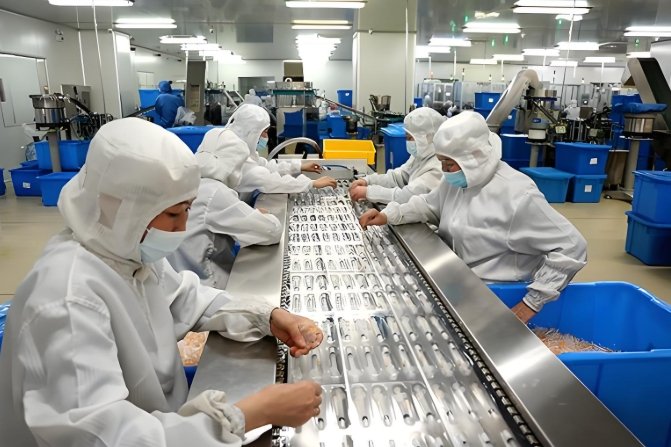
Rapid prototyping plays a crucial role in medical injection molding. It speeds up the development of medical devices and components. This process allows mold makers to quickly create and test prototypes. With faster feedback and improvements, manufacturers can ensure better quality and efficiency in production.
1. What is Rapid Prototyping?
1.1 Definition
Rapid prototyping involves creating a physical model directly from a computer design file. It uses 3D printing or other fast methods to produce prototypes. These prototypes are tested and refined quickly before full-scale production.
1.2 Why It Matters in Medical Injection Molding
- Speeds up the design process.
- Allows for quick testing of new ideas.
- Reduces the risk of errors in the final product.
- Saves time and money in product development.
2. How Rapid Prototyping Works in Medical Injection Molding
2.1 Using 3D Printing for Prototypes
- 3D printers build prototypes layer by layer.
- Mold makers use these models to test design concepts.
- This technique allows for complex shapes and details that are difficult with traditional methods.
2.2 Digital Simulation
- Before physical prototypes, digital simulations help identify design flaws.
- Advanced software models the injection molding process.
- This reduces the need for multiple physical prototypes.
2.3 Iterative Design Process
- Rapid prototyping allows for fast design iterations.
- Small changes can be tested quickly to find the best solution.
- Mold makers can refine the prototype based on test results.
3. Advantages of Rapid Prototyping in Medical Injection Molding
3.1 Faster Time to Market
- Prototypes can be produced in a fraction of the time compared to traditional methods.
- Faster prototyping speeds up the entire development cycle.
- Medical devices reach the market quicker.
3.2 Improved Design Accuracy
- 3D printed prototypes closely mimic the final product.
- Mold makers can verify designs early in the process.
- This ensures that the final product meets specifications.
3.3 Cost Savings
- Rapid prototyping reduces the number of molds needed.
- Testing digital prototypes prevents costly mistakes.
- Fewer material wastes lead to lower overall production costs.
3.4 Better Communication with Clients
- Prototypes provide a tangible model for clients to evaluate.
- This improves client feedback and allows for quicker adjustments.
- Clear visual models prevent misunderstandings during the design phase.
4. The Role of Mold Makers in Rapid Prototyping
4.1 Expertise in Material Selection
- Mold makers choose the right materials for both prototypes and final molds.
- This ensures that prototypes behave similarly to the final product.
- It helps test the performance of materials early on.
4.2 Designing Prototypes for Injection Molding
- Mold makers design prototypes that can be easily tested with injection molding.
- They ensure that the design can transition smoothly from prototype to mass production.
- They use rapid prototyping to identify any potential issues with mold design.
4.3 Incorporating Feedback Quickly
- Mold makers can make quick adjustments to prototypes based on feedback.
- This allows for constant improvements in the design before full-scale manufacturing.
5. Applications of Rapid Prototyping in Medical Injection Molding
5.1 Medical Device Development
- Medical devices require strict testing and validation.
- Rapid prototyping allows for quick adjustments in design.
- Prototypes help verify functionality and safety before production.
5.2 Custom Implants and Surgical Tools
- Rapid prototyping helps create custom implants.
- These implants are designed to fit the patient’s needs precisely.
- Surgeons can evaluate prototypes before implantation.
5.3 Drug Delivery Systems
- Prototypes of drug delivery systems can be tested for performance.
- Rapid prototyping helps test different configurations and materials.
- It ensures that the drug delivery system works as intended.
5.4 Diagnostic Equipment
- Prototypes for diagnostic equipment allow for real-world testing.
- This ensures the equipment is safe and effective for medical professionals to use.
6. Challenges of Rapid Prototyping in Medical Injection Molding
6.1 Material Limitations
- Some 3D printing materials may not accurately represent the final production material.
- Rapid prototyping may not fully simulate the properties of injection-molded parts.
6.2 Accuracy and Precision
- 3D printed prototypes may have slight differences from the final product.
- These differences could affect the performance or fit of the medical device.
6.3 Prototyping Cost
- While rapid prototyping reduces costs in the long run, initial investment in 3D printers or specialized equipment can be expensive.
- However, these costs are often outweighed by the savings in time and money during the development phase.
7. The Future of Rapid Prototyping in Medical Injection Molding
7.1 More Advanced Materials
- New 3D printing materials are being developed to more closely mimic real injection molding materials.
- These innovations will make prototyping even more accurate and efficient.
7.2 Increased Use of AI and Machine Learning
- AI can optimize prototype designs based on past data and real-time testing.
- Machine learning algorithms can predict potential issues before they arise.
7.3 Integration with Digital Twins
- Digital twins allow for virtual simulations of the entire manufacturing process.
- Prototypes can be tested virtually before physical models are created.
- This makes testing even faster and more cost-effective.
7.4 3D Printed Molds
- In the future, 3D printing may be used to create the molds themselves.
- This would further speed up the prototyping process and reduce the need for traditional tooling.
Rapid prototyping significantly impacts medical injection molding by speeding up design cycles, improving accuracy, and reducing costs. Mold makers play an essential role in utilizing rapid prototyping to refine designs, select materials, and ensure product quality. As technology advances, rapid prototyping will continue to enhance the medical manufacturing process, offering more precise, cost-effective solutions for the industry.
